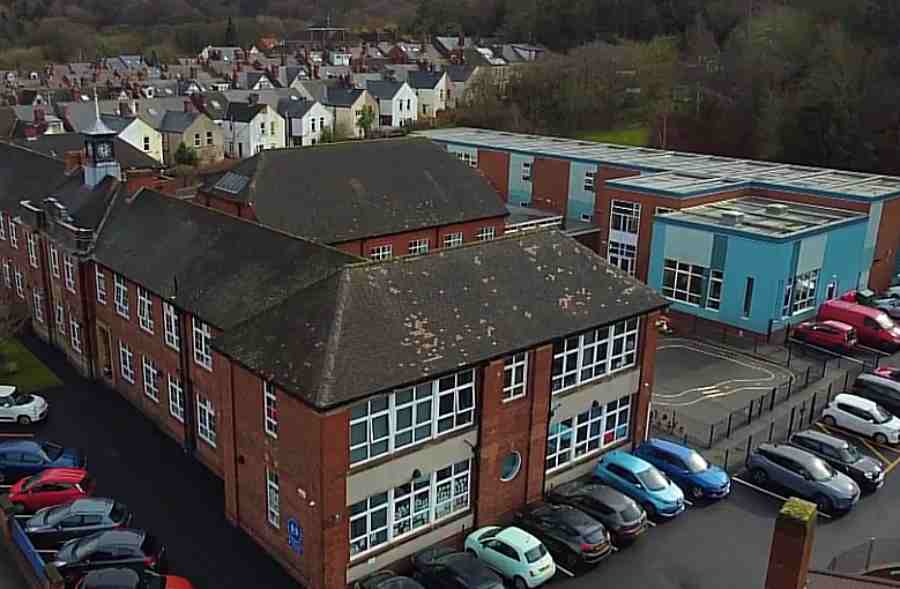Mon 04 September 2023:
The material, which has a 30-year life span, was used extensively to build schools between the 1950s and the mid-90s.
More than 100 schools across the United Kingdom have been ordered to close over fears that potentially dangerous concrete used in their construction between the 1950s and the mid-90s could lead to structural collapse.
The crisis has left teachers scrambling to find temporary accommodation and forced many students to begin their school year remotely.
Here is what you need to know about crumbling concrete and the risks it poses:
What is crumbling concrete?
This type of concrete, officially known as reinforced autoclaved aerated concrete (RAAC), is made from lime, water, and an aeration agent.
The mixture is poured into moulds that are exposed to high pressure and heat – known as autoclaving – to create a lightweight, strong, and porous material.
It is commonly referred to as “crumbling concrete” and described as “80 percent air”. It has also been nicknamed Aero Bar, a popular chocolate bar that contains pockets of air.
RAAC has been assessed to put buildings at risk of collapse after exceeding its 30-year lifespan.
Yeah “Make them safe” by closing them😡
“They’ve known about crumbling concrete for years, why has this blown up just before schools return?”
Because 2 school ceilings collapsed during the holidays, otherwise it’d still be on the ‘back burner’#ToriesOut424 #GeneralElectionNow pic.twitter.com/KN7Ai2h1S2
— Andrew🇪🇺🇬🇧 (@CourierBoyUK) September 3, 2023
How many schools are at risk?
In total, the UK government announced that 156 schools were built using RAAC. Out of those, 104 require urgent action, while 52 have already received repair works.
The UK schools minister, Nick Gibb, said these numbers would likely increase.
What is the temporary plan?
The crisis comes at the very start of the UK’s school year, meaning that many pupils have been forced to resume their studies either online or in temporary facilities.
The Department for Education (DfE) has not yet released a list of schools that have been ordered to close. Gibb said the full list would be released “only once we are in a stable place”.
Many schools, listed by media outlets, are partially closed as the local councils are working on erecting temporary solutions.
UK’s Guardian newspaper claimed that teachers are scrambling to find temporary accommodation in libraries, marquees and Portakabins.
The government initially announced it would not pick up the bill for the temporary structures but withdrew the statement after a furious response from teachers.
On Sunday, UK Chancellor of the Exchequer Jeremy Hunt promised to “spend what it takes” to make classrooms safe again, and that an “exhaustive process has been carried out to identify schools at risk”.
The government has said remote learning for pupils affected by school closures should last “days, not weeks”, but there has been no further clarification on when the affected schools will reopen.
While 35 schools in Scotland had been found to contain RAAC, the education secretary for Scotland, Jenny Gilruth, said they would not be shut.
Gilruth accused the UK government of deviating from advice given by the Institution of Structural Engineers.
What have the teachers said?
Mike Short, the head of education at the teacher’s union, Unison, said: “This situation is nothing short of a scandal. The DfE and government have squandered valuable months hiding this crisis when they should have been fixing dangerous school buildings.”
“The schools minister even broke his own promise to publish information about at-risk properties before parliament’s summer recess. Parents, pupils and staff will be relieved the issue is finally being taken seriously.
“But to wait until the eleventh hour as schools are preparing for a new academic year will create turmoil for thousands of families. And this could just be the tip of the iceberg.”
The Association of School and College Leaders policy director, Julie McCulloch, also heaped criticism on the DfE, saying they had been aware of RAAC’s dangers since 2018.
Is it just schools that are affected?
More than 30 hospitals are also believed to be at risk, according to experts.
The Local Government Association has also said although municipal architects mainly used RAAC in schools and offices, it has also been found in other buildings, including shopping centres and homes.
Matthew Byatt, the head of the Institution of Structural Engineers, has claimed that high-rise buildings with flat roofs constructed between the late 1960s and the 90s could contain RAAC.
A criminal court in north London was reportedly shut down recently due to the use of RAAC.
Why is asbestos also an issue?
There are fears that crumbling concrete could expose asbestos, a highly carcinogenic material that is now banned in the UK but was extensively used in construction between the 1950s and the 90s and remains in at least 300,000 non-domestic buildings across the country.
Asbestos is not considered harmful if undisturbed, but if exposed or broken into smaller parts, it can lead to cancers, in particular lung cancer, if inhaled.
If asbestos is found in schools that have been closed due to the presence of RAAC, it could hamper repair work and lead to months-long closures.
______________________________________________________________
FOLLOW INDEPENDENT PRESS:
TWITTER (CLICK HERE)
https://twitter.com/IpIndependent
FACEBOOK (CLICK HERE)
https://web.facebook.com/ipindependent
Think your friends would be interested? Share this story!





